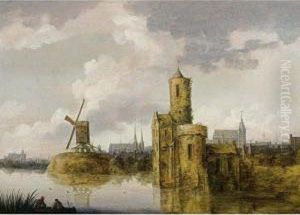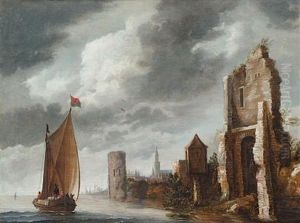Pieter Segaer Paintings
Pieter Segaer, also known as Pieter Seghers or Pieter Cigar, was a lesser-known yet notable figure in the 17th-century Flemish art scene. Born in 1620 in the bustling city of Antwerp, then a major center of art and commerce in the Spanish Netherlands, Segaer's life and career were deeply intertwined with the rich cultural tapestry of his time. Despite the scarcity of detailed records about his personal life, it is known that he was active during a period marked by the Baroque style, which emphasized movement, detail, and emotion.
Pieter Segaer's contributions to art were primarily as a painter, though there is little surviving work that can be definitively attributed to him. His style, as inferred from the few pieces thought to be his, suggests a strong influence from the more prominent artists of his day, such as Peter Paul Rubens and Anthony van Dyck. Segaer's works are characterized by their use of vibrant colors, intricate details, and dynamic compositions, hallmarks of the Baroque sensibility.
Despite his talents, Segaer did not achieve the same level of fame as his contemporaries. Historical records suggest that he may have worked in the workshops of more established artists, a common practice at the time that allowed young artists to hone their skills and contribute to large commissions. This apprenticeship system, while beneficial for artistic development, often meant that the contributions of individuals like Segaer were absorbed into the collective output of the workshop, leaving them with little individual recognition.
Pieter Segaer's death in 1665 marked the end of a career that, while not widely celebrated, contributed to the rich tapestry of Flemish art. The lack of comprehensive documentation has made it challenging for historians to fully assess his impact on the art world. Nonetheless, the few pieces attributed to him continue to be studied for their craftsmanship and stylistic relevance to the Baroque period. Segaer's life and work embody the complexities of artistic production in the 17th century, highlighting the blend of individual talent and collaborative effort that characterized the era's artistic endeavors.

